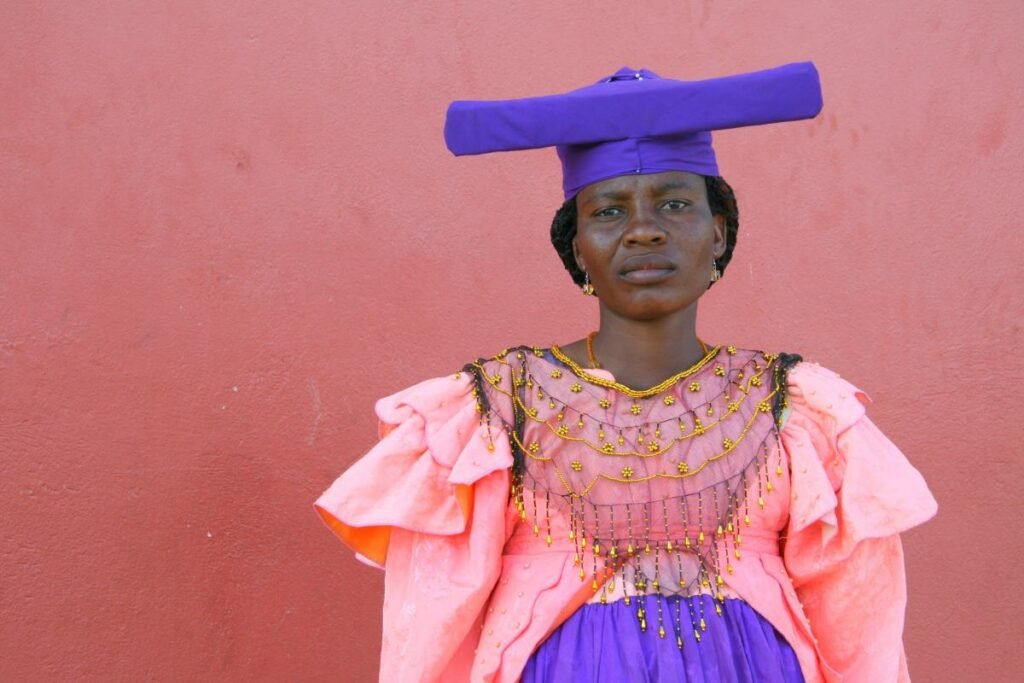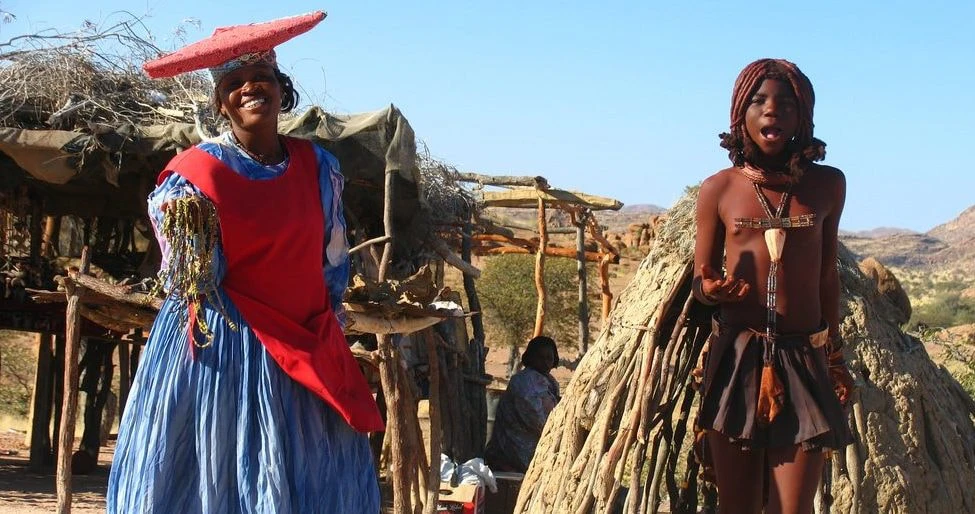The Herero culture of Namibia is a rich and diverse heritage that has been shaped by the unique history and geography of the country.
This culture is deeply rooted in the traditions and beliefs of the Herero people, who are one of the largest ethnic groups in Namibia.
The Herero people have a rich history dating back to the early 19th century. They were originally pastoralists who lived in the arid regions of northern Namibia, where they raised cattle and sheep.
However, their traditional way of life was disrupted by German colonial rule in the late 19th and early 20th centuries. The German colonizers brought with them new ideas and ways of life, which had a profound impact on the Herero people.

One of the most distinctive aspects of Herero culture is the clothing that the women wear. The traditional dress consists of a long, high-necked, full-sleeved Victorian-style blouse with a long, flared skirt.
The women often wear large, elaborate hats that are adorned with feathers and other decorative elements. The dress is considered a symbol of the Herero people’s independence and resilience, and it is worn with pride by Herero women of all ages.
Another important aspect of Herero culture is their traditional music and dance. The Herero people have a rich musical heritage that includes traditional songs and dances that are performed at celebrations and festivals.
The music is an important part of their cultural identity, and it is passed down from generation to generation. The traditional dances are performed in a circular pattern, with the participants forming a circle and moving in rhythm to the beat of the music.
The Herero people are also known for their intricate and beautiful beadwork, which is used to decorate their clothing and other items. The beadwork is an important part of their cultural identity, and it is passed down from generation to generation.
The beads are carefully selected and arranged to form intricate patterns and designs, and they are often used to tell stories and convey messages.
In addition to their rich cultural heritage, the Herero people also have a strong spiritual tradition. They believe in a powerful and benevolent God who watches over them and provides for their needs. They also believe in ancestors who guide and protect them, and they perform traditional rituals and ceremonies to honor and communicate with their ancestors.
The Herero people have a strong sense of community, and they work together to maintain their cultural traditions and beliefs. They are a tight-knit group, and they support each other in times of need. They also work together to preserve their cultural heritage, and they pass on their traditions and beliefs to the next generation.
The Herero culture has been greatly impacted by the events of the early 20th century, when the German colonizers attempted to wipe out the Herero people. However, despite the horrors of this time, the Herero people have remained strong and resilient, and they continue to maintain their cultural heritage and traditions.
In conclusion, the Herero culture of Namibia is a rich and diverse heritage that has been shaped by the unique history and geography of the country. The Herero people are proud of their cultural heritage, and they work to preserve their traditions and beliefs for future generations.
Despite the challenges they have faced, they continue to thrive and maintain their cultural identity, and their culture remains an important part of Namibia’s rich cultural heritage.

